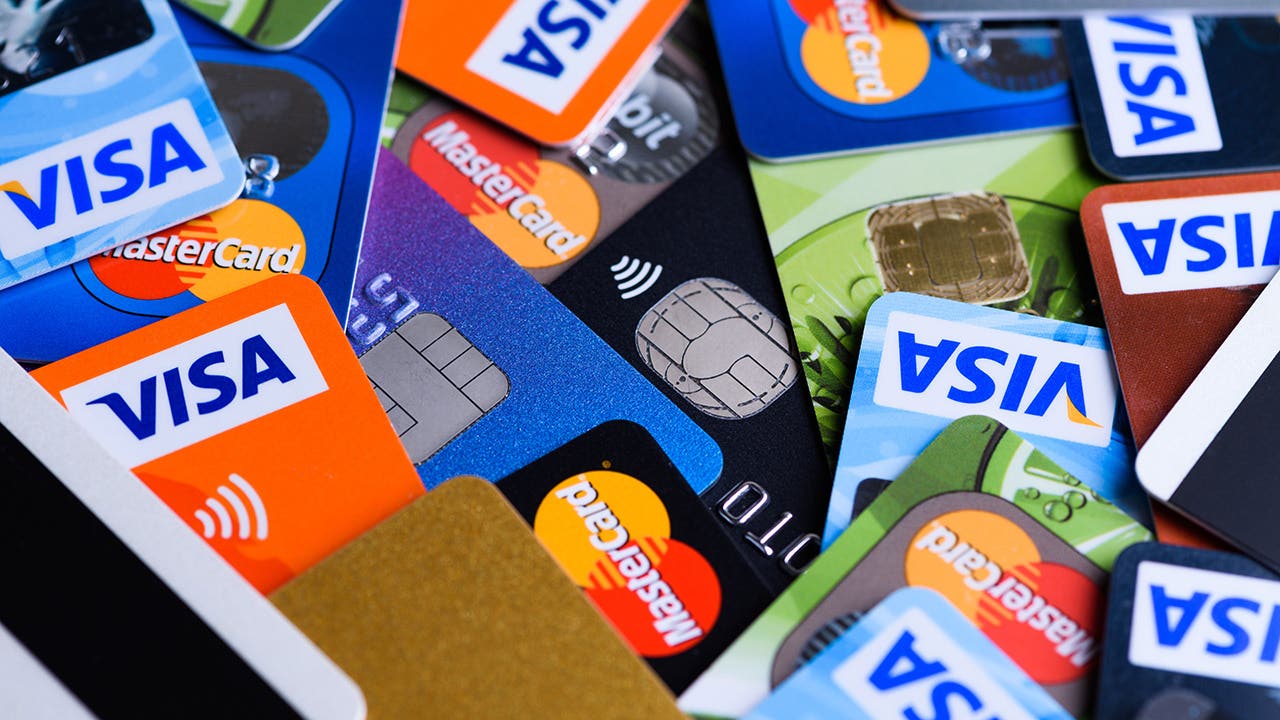Best credit card combinations to maximize rewards




Key takeaways
- The right combination of credit cards can help you to gain more redemption options and get more than 1 cent in value from your rewards
- Since the best credit card combinations usually involve at least one card with an annual fee, this strategy is best for consumers who will be able to utilize enough premium card benefits to make paying the annual fee worth it
- This type of card combination strategy is not suited for consumers who plan on carrying a balance since paying interest will wipe out any rewards earnings
Having the right credit card makes it easy to earn cash back or travel rewards for each dollar you spend, but the right combination of cards can be even better. That’s because many cards have rewards structures that work well together. Plus, many cards from the same card issuer allow you to pool all of your points into one account — which means you may have more redemption options available that will allow you to maximize rewards value.
Although juggling multiple credit cards for rewards can be risky for some due to the potential to rack up debt and miss payments, organized rewards enthusiasts could reap the benefits of combining cards. If you’d like to know more about this somewhat advanced rewards strategy, this guide will help.
Chase Freedom Flex and Chase Sapphire Reserve: Best for diverse spending
The Chase Freedom Flex℠* and Chase Sapphire Reserve® are a powerful pair for diverse spending needs. It all starts with the Chase Freedom Flex, which offers 5 percent cash back on up to $1,500 spent in rotating bonus categories each quarter (activation required), then 1 percent back. Additionally, you’ll earn 3 percent back on dining and drugstore purchases and 5 percent back on both Chase Ultimate Rewards travel purchases and Lyft rides (Lyft offer through March 2025). Plus, this card comes with no annual fee and you can qualify for a $200 welcome bonus when you spend $500 within three months of account opening.
With the Chase Sapphire Reserve, which comes with a $550 annual fee, you’ll earn 10X points on Chase Dining purchases through Chase Ultimate Rewards, 10X points on hotel stays and car rentals through Ultimate Rewards, 10X points on Lyft purchases (through March 2025), 5X points on travel through Ultimate Rewards, 3X points on general travel and restaurant purchases and at least 1X points on other purchases. You can also earn a welcome bonus of 60,000 points when you spend $4,000 within three months of account opening, along with travel perks and other benefits.
How to maximize this combination
The key here is using the right card in the right situation. With both the Freedom Flex and Sapphire Reserve, you can earn ample points on everything ranging from dining to groceries as well as hotel stays and car rentals. Just remember to use the card that offers more rewards for that category.
Instead of earning cash back with the Chase Freedom Flex, you’ll actually earn Chase Ultimate Rewards points, which you can transfer to the Chase Sapphire Reserve to take advantage of high-value redemption options. For example, you’ll get a 50 percent points boost on travel through the Chase Ultimate Rewards travel portal.
For an even better deal, redeem your points for 1:1 transfers to Chase airline and hotel transfer partners, like Southwest Rapid Rewards, Marriott Bonvoy and United MileagePlus. Although it depends on which transfer partner you redeem with, you can get around 2.0 cents per point in value from Ultimate Rewards, according to our points and miles valuations.
What to consider before applying
Although the Chase Sapphire Reserve is a great travel credit card to have, it has a $550 annual fee. Consequently, you’ll want to use its benefits to fully recoup the annual fee so that holding the card is worth it. For example, you’ll get up to $300 in annual travel credits each year, up to $100 in credits for Global Entry or TSA PreCheck and access to over 1,300 airport lounges worldwide.
The Platinum Card from American Express and The Blue Business Plus Credit Card from American Express: Best for business travelers
The Platinum Card® from American Express includes a hefty $695 annual fee, a welcome offer of 80,000 points when you spend $8,000 within six months of card membership and a rewards structure that awards you for travel purchases. Specifically, you’ll earn 5X points on flights booked directly with airlines or through American Express Travel (on up to $500,000 spent per year, then 1X points), 5X points on prepaid hotels booked through American Express Travel and 1X points on all other purchases.
The Blue Business® Plus Credit Card from American Express, on the other hand, comes with no annual fee and a flat 2X points on up to $50,000 in purchases per year (then 1X points), which makes it a solid choice for small-business owners. It also includes perks for business owners like employee cards and account management tools.
How to maximize this combination
To make the most of this combo, use the Amex Platinum for all of your airfare and prepaid hotels, but be sure to use your Amex Blue Business Plus for all non-category spending. Additionally, there’s a slew of premium Platinum card benefits, and although a $695 annual fee applies, cardholders who take advantage of even a few of these benefits can easily regain the cost of card membership.
Make sure to then pool all of your points in your Amex account and redeem them for travel purchases through American Express Travel or for transfers to Amex airline and hotel partners, like Delta SkyMiles or Air France/KLM Flying Blue. Plus, Membership Rewards points can be worth around 2.0 cents apiece according to our points and miles valuations. More information on strategically redeeming points and miles can be found in Bankrate’s travel toolkit.
What to consider before applying
The Platinum Card from American Express works best for consumers who travel a lot and can take advantage of its numerous benefits. Be sure to select an airline you fly with frequently for the up to $200 annual airline incidentals credit, and connect your credit card to your Uber account so you can use the allotted monthly credit (up to $15 per month, plus an extra up $20 in December, for a total of up to $200 in Uber Cash per year).
Also, don’t forget to take advantage of the Amex Platinum’s airport lounge benefit, and be sure to apply for a Clear Plus membership and Global Entry or TSA PreCheck to get the most bang for your buck (you’ll get up to $189 in credits to cover the cost of Clear Plus membership and up to a $100 credit to cover the cost of Global Entry or TSA PreCheck). Receive either a $100 statement credit every 4 years for a Global Entry application fee or a statement credit up to $85 every 4.5 years for a TSA PreCheck® (through a TSA official enrollment provider) application fee, when charged to your Platinum Card®. Card Members approved for Global Entry will also receive access to TSA PreCheck at no additional cost.
The Amex Blue Business Plus Credit Card is best suited for small-business owners who want to earn rewards on purchases but don’t want to keep track of bonus categories. It’s also best suited for lower spenders since the 2X points rate is capped at $50,000 in purchases per year.
Citi Premier Card and Citi Double Cash Card: Best all-around combination
The Citi Premier® Card, which comes with a $95 annual fee, offers you the chance to earn a welcome bonus of 60,000 points when you spend $4,000 within three months of account opening. You’ll also earn 3X points on restaurant, supermarket, gas station, hotel and air travel purchases. Plus, for a limited time, earn a total of 10 ThankYou® Points per $1 spent on hotel, car rentals, and attractions (excluding air travel) booked on the Citi Travel℠ portal (through June 30, 2024), along with 1X points on all other purchases.
In comparison, the Citi® Double Cash Card, which comes with no annual fee, provides 2 percent cash back on everything you buy — 1 percent back when you make a purchase and another 1 percent back as you pay off your purchase. Note that this card technically earns basic Citi ThankYou points, which means you can’t transfer them to Citi travel partners unless you have a premium Citi card like the Citi Premier.
How to maximize this combination
Use the Citi Premier for all of your air travel, restaurant, supermarket, hotel and gas station purchases. Meanwhile, use the Citi Double Cash for all non-bonus category purchases since you’ll earn up to 2 percent back. As you rack up rewards, pool them all in your Citi Premier account, which earns standard Citi ThankYou points — meaning you can then transfer points to Citi travel partners for optimal value. Citi ThankYou points are estimated to be worth around 1.6 cents apiece according to our points and miles valuations.
What to consider before applying
Although the Citi Premier has a $95 annual fee, you should be able to recoup the cost of card membership through the card’s up to $100 annual hotel credit, which is applicable on a single hotel stay of $500 or more (excluding taxes and fees) when you book through ThankYou.com or 1-800-THANKYOU.
Otherwise, you can recoup the annual fee through rewards earned on bonus category purchases. For example, if you’re able to spend at least $267 per month ($3,204 per year) on bonus categories that earn 3X points, you’ll earn 9,612 points (worth $96.12) and be able to make up for the annual fee.
The Chase trifecta: Best for maximizing Chase Ultimate Rewards
So far, we’ve been discussing credit card duos. However, if you’re ready to take your combo game to the next level, you may want to consider a trifecta of cards. This option — which is for those who don’t mind putting extra work into their credit card strategy — could offer even more potential to maximize rewards.
The Chase trifecta is arguably the best-known card trio. The card combinations can differ, but the most common trio includes the Chase Freedom Unlimited®*, Ink Business Preferred® Credit Card and Chase Sapphire Reserve.
The Chase Freedom Unlimited earns at least 1.5 percent cash back on general purchases, helping you to get more than 1 percent back on all non-category purchases you make. Further, this no-annual-fee card offers 5 percent back on Lyft purchases (through March 2025), 5 percent back on Chase Ultimate Rewards travel and 3 percent back on dining and drugstore purchases.
As for the Chase Ink Business Preferred, you’ll earn 3X points on travel and in select business categories (on up to $150,000 each year, then 1X points). Business categories include travel; shipping purchases; internet, cable and phone services; and advertising purchases made with social media and search engines. A $95 annual fee applies for this card.
How to maximize this combination
Chase Ultimate Rewards points are one of the most valuable rewards currencies in the credit card space, and tripling your efforts on collecting Ultimate Rewards points can allow you to fast-track your way to lucrative redemptions.
But if you’re only looking for personal credit cards, you can swap the Chase Ink Business Preferred with the Chase Freedom Flex to still get the most out of your credit card trio.
What to consider before applying
The Chase Sapphire Reserve comes with a $550 annual fee and the Chase Ink Business Preferred includes a $95 annual fee. If you opt for this trio, make sure you’re able to take advantage of enough card benefits to recoup the cost of card membership for both cards. If this trio doesn’t match your spending habits, you should consider other top Chase cards until you find the trio that works best for your needs.
The Amex Trifecta: Best for American Express loyalists
Juggling multiple credit card rewards currencies requires an intricate strategy and a certain level of spending, especially if we’re talking about cards with annual fees — and these efforts might not make sense for many cardholders. That’s why it might be a better idea to stay loyal to one credit card issuer.
Sticking with American Express can be a rewarding option if you have a premium Amex card that earns American Express Membership Rewards points. If you’re looking to maximize rewards, consider the Amex trifecta: the Amex Platinum Card, the Blue Business Plus and the American Express® Gold Card.
With the Amex Gold, you’ll earn 4X points on restaurants, Uber Eats purchases and U.S. supermarket purchases (on up to $25,000 in purchases per year, then 1X points); 3X points on flights booked directly with airlines or via American Express Travel and 1X points on all other purchases.
How to maximize this combination
We’ve already covered how the Amex Platinum and Amex Blue Business Plus work together, but by adding the Amex Gold, you can significantly boost your rewards earnings. No matter if you buy groceries, order in or eat out, the Amex Gold offers generous rewards on these spending categories, plus a great rewards structure for trips booked through Amex Travel.
Although the American Express Gold Card has a $250 annual fee, the card almost pays for itself with its annual statement credit benefits for Uber and dining: You’ll get up to $120 in Uber Cash (up to $10 per month) on Uber Eats orders or Uber rides in the U.S. and up to $120 in dining credits (up $10 per month) on eligible purchases with select brands and restaurants (enrollment required). Add in the up to $100 credit for booking an eligible hotel stay of two consecutive nights or more through the Amex Travel portal, and the Amex Gold’s statement credit perks can more than make up for the fee.
What to consider before applying
Keep in mind that this trio will cost you $945 in annual fees. While you can more than justify the cost if you use all (or many) of the available statement credit benefits and card perks, doing so may require significant spending and effort on your part.
The bottom line
Having a few top rewards credit cards that complement each other can help you earn a lot more rewards and benefits over time. To make the most of these card combinations, you’ll have to be committed to only making purchases you planned to make anyway.
Also, be prepared to pay your balances in full each month to avoid paying interest on your purchases. If you wind up paying a 20 percent APR or more on a revolving balance, the rewards you’ll earn on purchases won’t be worth it.
*The information about the Chase Freedom Flex℠ and Chase Freedom Unlimited® has been collected independently by Bankrate.com. The card details have not been reviewed or approved by the card issuer.






